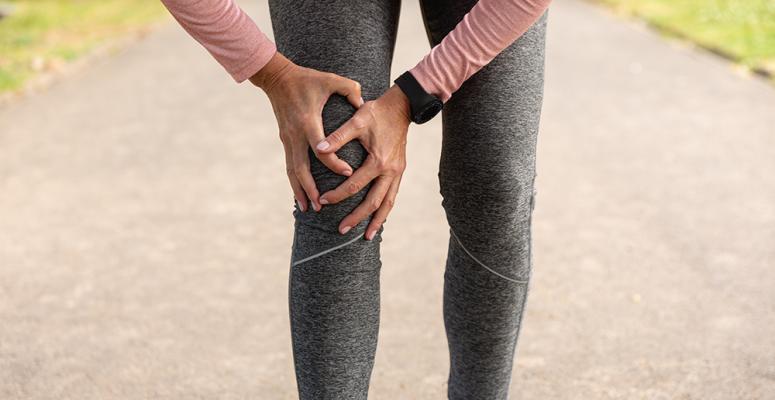
- A tight knee when you bend or straighten it can affect your day-to-day life
- What can cause your knee to feel tight when you bend or straighten it?
- Why does my knee feel tight when I bend it after surgery?
- 7 physical therapy modalities that can help stiff and painful knees
- Alliance PTP is ready to help you find top-notch PT for living with tight, stiff knees
The knee is essential for the movement and stability of the body. It absorbs shock and distributes weight to reduce the impact on the bones and joints of the lower body. It also keeps the body properly aligned. When you experience tightness or pain in your knees, it can have a drastic impact on your quality of life. If you experience knee pain, you aren’t alone. Approximately 25% of people suffer from knee pain. Pain may range from mild to severe. There are many potential reasons behind your pain, so it’s important to see a health care provider to determine the cause. Once the cause is determined, appropriate treatment options can be discussed. A common and effective treatment recommendation for many issues causing knee pain is physical therapy.
A tight knee when you bend or straighten it can affect your day-to-day life
Dealing with tightness in your knee can significantly affect your day-to-day life. Here’s how it may affect you:
- Difficulty walking.
- Pain and discomfort.
- Limited range of motion.
- Difficulty doing everyday activities.
- Limiting enjoyment and social interactions.
- Affecting emotional well-being.
- Sleep disturbances.
What can cause your knee to feel tight when you bend or straighten it?
Tight, stiff and painful knees can be due to an injury, like ligament injuries, or overuse, like runner’s knee. It can also be due to certain conditions. Several conditions that can be behind your tight and stiff knee when you bend or straighten include, but aren’t limited to:
- Tendinitis — Tendons are tough tissue that connect muscles to bones like the quadriceps and patellar tendons of the knee joint. They’re crucial for transmitting muscle forces to enable knee stability and movement. Tendinitis happens when the tendons become inflamed and can cause pain and stiffness during knee movements.
- Osteoarthritis — Osteoarthritis in the knee affects 365 million people worldwide, making it the most common form of osteoarthritis. It is caused by the breakdown of cartilage in the knee joint. As cartilage breaks down, it causes bone-on-bone friction, leading to pain and stiffness during movement.
- Rheumatoid arthritis — Rheumatoid arthritis affects 13 million people worldwide. It’s a chronic autoimmune disease that can attack the joints in the body, including the knees. It usually affects both knees and can cause stiffness and pain.
- Meniscus tears — The meniscus is a C-shaped piece of cartilage between the femur and tibia. It absorbs shock, reduces friction, and cushions and helps stabilize the knee by maintaining joint alignment during movement. Meniscus tears can affect the smooth movement of the knee and cause pain. Approximately 1 million Americans deal with meniscus tears each year.
- Bursitis — Bursae are small fluid-filled sacs that help cushion and lubricate joints. They help reduce friction and make movement easier by preventing irritation or inflammation. However, if the bursae become inflamed, it can cause swelling and discomfort. Bursitis can make it painful to fully bend or straighten the knee.
- Ligament injuries — Ligaments are strong, fibrous bands that connect bones to other bones. They help support the knee to keep it stable. The ACL (anterior cruciate ligament) and PCL (posterior cruciate ligament) control forward and backward movement, respectively. The MCL (medial collateral ligament) and LCL (lateral collateral ligament) control side-to-side movement. They help keep the joint in its proper range of motion and alignment during activities. Injuries to the ligaments can cause instability and pain. The pain can be worse when bending or straightening the knee. Around 200,000 ACL tears happen each year in the U.S.
- Baker’s cyst — A Baker's cyst is a common cause of swelling in the back of the knee. This cyst is caused by extra fluid in the knee joint that causes the bursae to swell. It can happen due to arthritis or gout. This swelling can cause pain and difficulty bending and straightening the knee.
- Arthrofibrosis — Arthrofibrosis can happen after trauma or surgery. It happens because of an abnormal healing response and causes excessive scar tissue to form. The excessive scar tissue keeps the joint from moving normally. It can cause stiffness and discomfort when bending or straightening the knee.
- Gout — Gout is a type of inflammatory arthritis caused by the buildup of uric acid crystals in the joints. It affects roughly 9.2 million people. When these crystals accumulate in the knee joint, it can become excruciatingly uncomfortable to bend or straighten the knee. It may also cause the knee to become swollen, red and warm to the touch. Without proper management, gout attacks can continue to occur and cause joint damage.
Why does my knee feel tight when I bend it after surgery?
Your injury or condition causing your tight knee may require surgery. Issues like ligament tears, meniscus injuries, arthritis or severe trauma to the knee may all need surgery to help repair or reconstruct damage. After surgery, you may find your knee still tight when you bend or straighten it. This can be due to a variety of factors:
- Inflammation and swelling — After surgery, you may experience inflammation and swelling in the tissue around the knee. This can cause limited movement and tightness when you bend your knee. Some inflammation and swelling are normal. However, excessive swelling and inflammation can be a sign of infection. Infections need quick medical attention.
- Scar tissue — Scar tissue forming is a natural part of the healing process. However, your body may produce an excessive amount of scar tissue (arthrofibrosis) around the surgical site. Scar tissue can build up in your knee joint and keep it from its normal movement and cause stiffness.
- Limited movement — During recovery, the muscles and soft tissue around the knee can become tight due to being immobilized or having limited movement. Physical therapy during recovery can help gradually restore your mobility and range of motion in the knee.
- Pain control — Post-surgery pain is usually manageable. Some people can find it more difficult, or the side effects of pain medications are too much. A lack of pain control can cause increased difficulty in gaining motion after knee surgery.
7 physical therapy modalities that can help stiff and painful knees
Whether you are dealing with a condition, injury or surgery recovery causing your painful, stiff knees, physical therapy can be an effective way to help. Effective physical therapy modalities can include:
- Pre- and postoperative rehab — Preoperative rehab focuses on strengthening your muscles around the affected knee joint. It can help improve your flexibility and optimize your overall function to prepare you for surgery. Postoperative rehab aims to boost your recovery, reduce pain and swelling, restore your mobility, and help you regain strength in your knee after surgery. Pre- and postoperative rehab can include exercises, manual therapy and other techniques to help prevent stiffness and promote healing.
- Cupping — Cupping involves placing special cups on the skin to create suction. This suction helps increase blood flow to the affected area. Increased blood flow can help promote healing and reduce stiffness in the knee. It can also help release tension in the muscle surrounding the knee joint.
- Dry needling — Dry needling is a technique used by certified physical therapists. They insert thin, sterile needles into specific trigger points in the muscles. This can help relieve pain and improve range of motion by releasing tight muscles and restoring flexibility in the stiff knee joint.
- Graston Technique® — The Graston Technique uses specially designed stainless steel instruments to detect and break up scar tissue. By applying controlled pressure and friction to the affected area’s muscles and connective tissue, the instruments can break up detected scar tissue. Breaking up the scar tissue can help reduce inflammation and improve mobility.
- Instrument-assisted soft tissue mobilization (IASTM) — IASTM involves using specially designed tools to manipulate soft tissue. It helps break up adhesions, scar tissue and fascial restrictions that can be behind knee stiffness. It can help improve mobility and alignment to improve the range of motion in the knee.
- McKenzie Method®— The McKenzie Method is used by physical therapists to help patients learn exercises and movements tailored to their individual needs. These movements and exercises can help reduce pain, restore function and promote self-management of symptoms associated with knee joint pain and stiffness.
- Manual therapy — Manual therapy is an umbrella term for several techniques including joint mobilization and soft tissue mobilization. These techniques are intended to help joint mobility and reduce knee stiffness. Physical therapists use their hands to apply gentle pressure and movement to the knee joint and surrounding tissue. The gentle pressure and movements can help promote relaxation and improved range of motion.
Alliance PTP is ready to help you find top-notch PT for living with tight, stiff knees
At Alliance Physical Therapy Partners, we’re proudly bringing together physical therapy practices across the country to help people get the high-quality PT they need.
Want to see a physical therapist in person? We can put you in touch with an Alliance PTP partner that’s close to you and that can help you address stiff and painful knees.
Come find help for your injury or chronic condition today!
Get Help at a Location Near You
